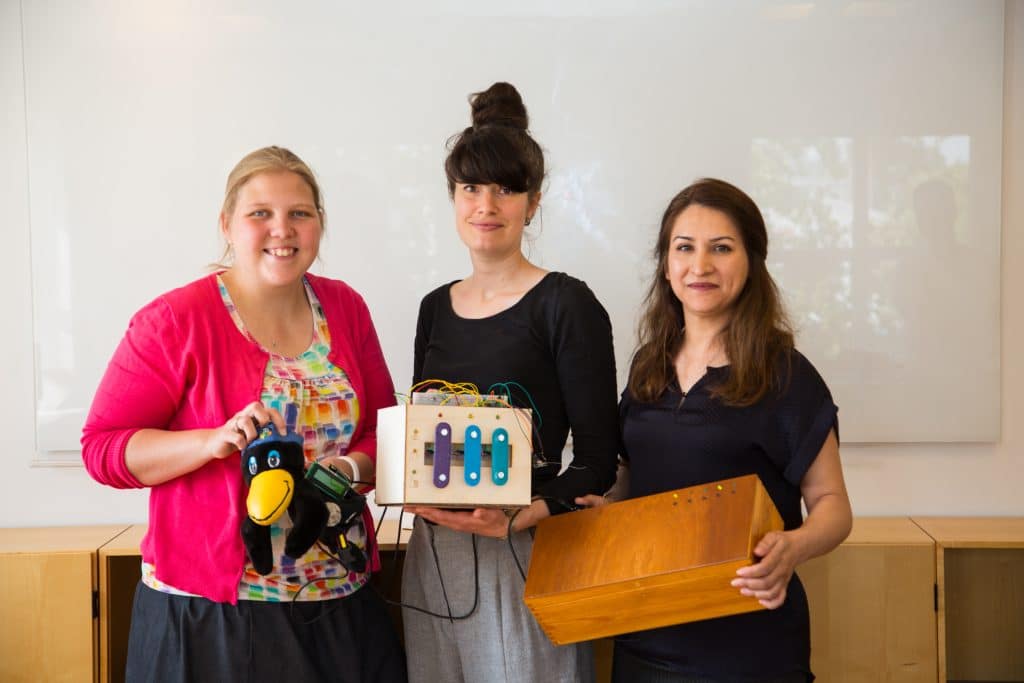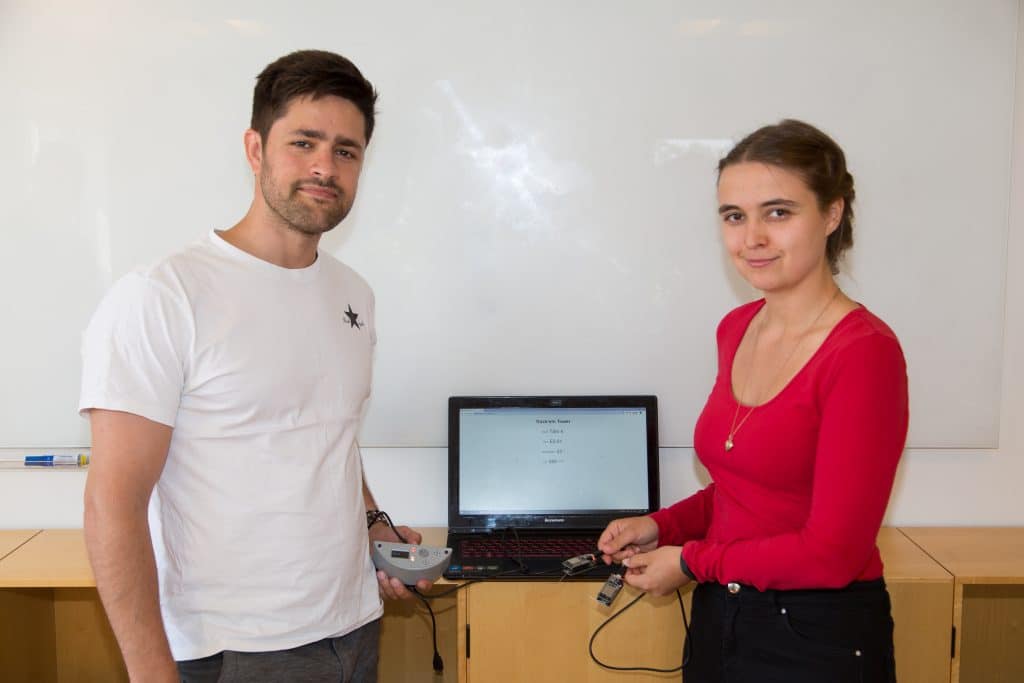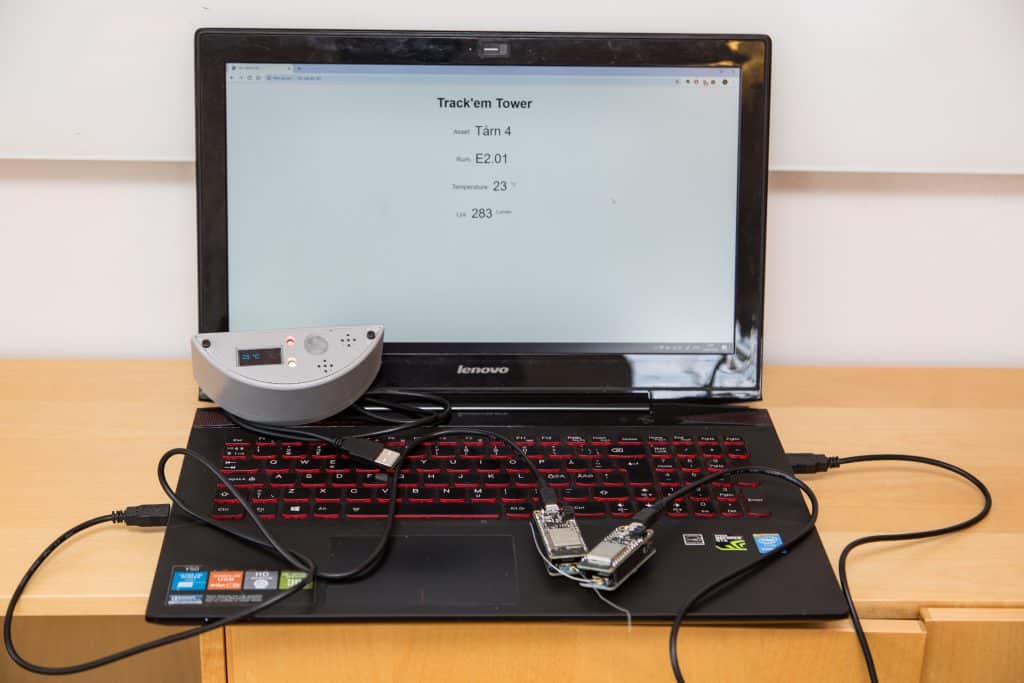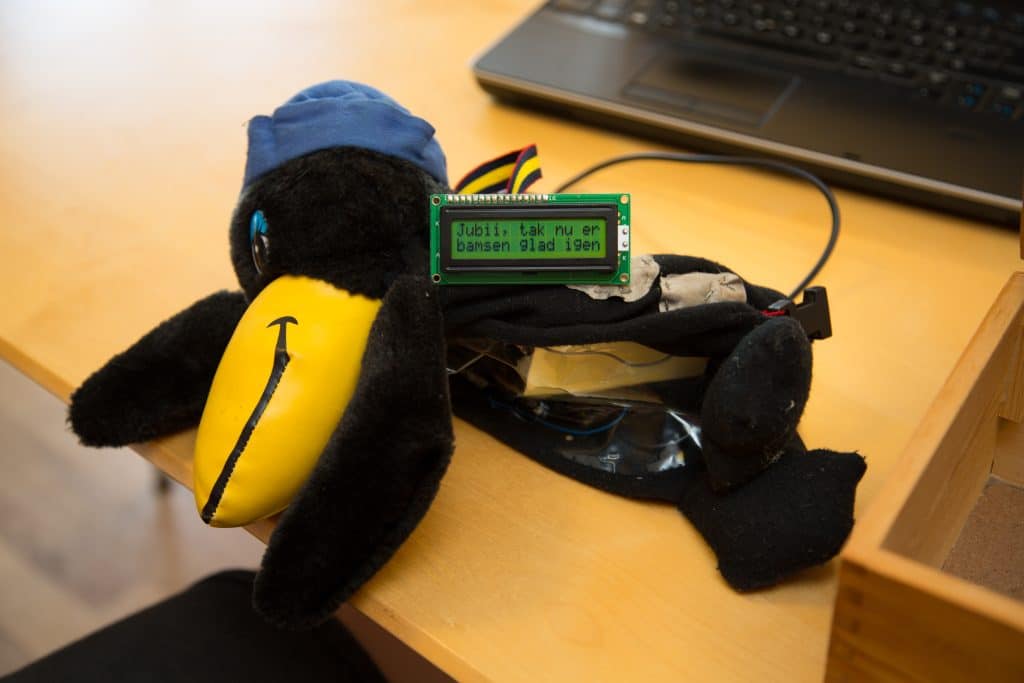

A group of engineering students have used NeoMesh to experiment with wireless sensor systems, and they came up with two imaginative concepts that utilize mesh connectivity: An intelligent power tower, and an interactive treasure hunt for children.
| Share |
|

Interactive treasure hunt for children and intelligent power tower: Experimenting with NeoMesh, a group of students from DTU, the Technical University of Denmark, have come up with two interesting and very different concepts to utilize mesh connectivity.
Students of the study programme Process and Innovation are specializing in product development, business strategies and new technologies, to become design engineers, user experience designers, project managers or entrepreneurs.
Physical Computing is one of the courses of the study programme. It challenges the students to apply their theoretical knowledge in practice, to work with embedded systems and integrate software and hardware.
A group of students have used NeoMesh to experiment with wireless sensor systems, and they came up with two imaginative concepts that utilize mesh connectivity: An intelligent power tower, and an interactive treasure hunt for children.

Tower with sensors
The “Intelligent Power Tower” was triggered by something right under the students’ noses: The mobile power outlets in the DTU classrooms. You could equip them with sensors to measure temperature, humidity, CO2 level etc., and not least determine their exact location, as they often are taken from the classroom to which they are allocated and put to use elsewhere. And on top of that, with the data collected you could determine which classrooms are occupied, making it easier to find an unoccupied one to use.
Nadia Fleischer, Scarlett Avalon, and Orion Pilo set out to design a solution, using Bluetooth Low Energy beacons together with a NeoMesh backhaul system:
They equipped a sensor device mounted on top of the power tower with a Bosch BME-680 low power air quality sensor, a AMS TCS3472x Color Sensor for lux measuring, and an Electret Microphone Amplifier for noise measuring. They connected the sensors to an ESP32 Feather Board and a Bluetooth Low Energy transmitter. To receive the data from the transmitter they mounted a “sniffer” in the classroom consisting of a BLE receiver combined with a NeoCortec NeoMesh module. From the sniffer data could flow via NeoMesh to other nodes in the network and from there via WiFi to a database and on to a website, where you could see the measurements from the towers and their location. This setup uses the NeoCortec network as a backhaul system and enables deployment of “sniffers” in every classroom with data finding its way automatically through the network.

Many possibilities
The Intelligent Power Tower concept combines asset tracking with environmental sensors creating a number of interesting possibilities: Not only can you find the power tower you need. You can also measure air quality to improve your working environment. Furthermore, when the classroom is empty, the sensors can detect if somebody has left the lights on, or if a projector hasn’t been shut down properly and keeps on running. This can save energy, maintenance costs etc.
Interactive treasure hunt
And now to something completely different, yet still with NeoMesh making things work: A treasure hunt for children, with a toy animal, a xylophone and a locked treasure chest.
Charlotte Broksø Letting, Sophia Maria Seitz-Rasmussen, and Zarah Moradian’s treasure hunt uses connected sensors and a treasure box that unlocks if you perform the tasks required.

The first thing you have to do is cuddle the toy animal, because it is sad. Three touch sensors determine if you have done the job well. If so, a small LCD display lights up and says “Thank you, now I’m happy again”. From there you proceed to the next step of the treasure hunt: a box with a small xylophone on top of it. Small lights indicate the short melody you have to play, and IR sensors check if you’ve done it right.
When you’ve performed that task you can move on to the treasure box itself. If you have cuddled the toy animal to its satisfaction, and played the melody as you should, small green lights on top of the treasure box light up. Push them, and a servomotor will open the box and reveal your reward. Al three parts of the setup use ESP32 microcontrollers and NeoCortec radio modules for connectivity.
For fun and learning
This treasure hunt of the future can be used not only for fun, incorporating interactivity and connectivity into toys. It can be used for teaching as well, for instance for students following a route through their own city learning about its history, or in the countryside to learn about biology and environmental issues.
We wish Charlotte, Pilo, Scarlett, Sophia, Nadia, and Zarah the best of luck in their future careers as tech innovators.